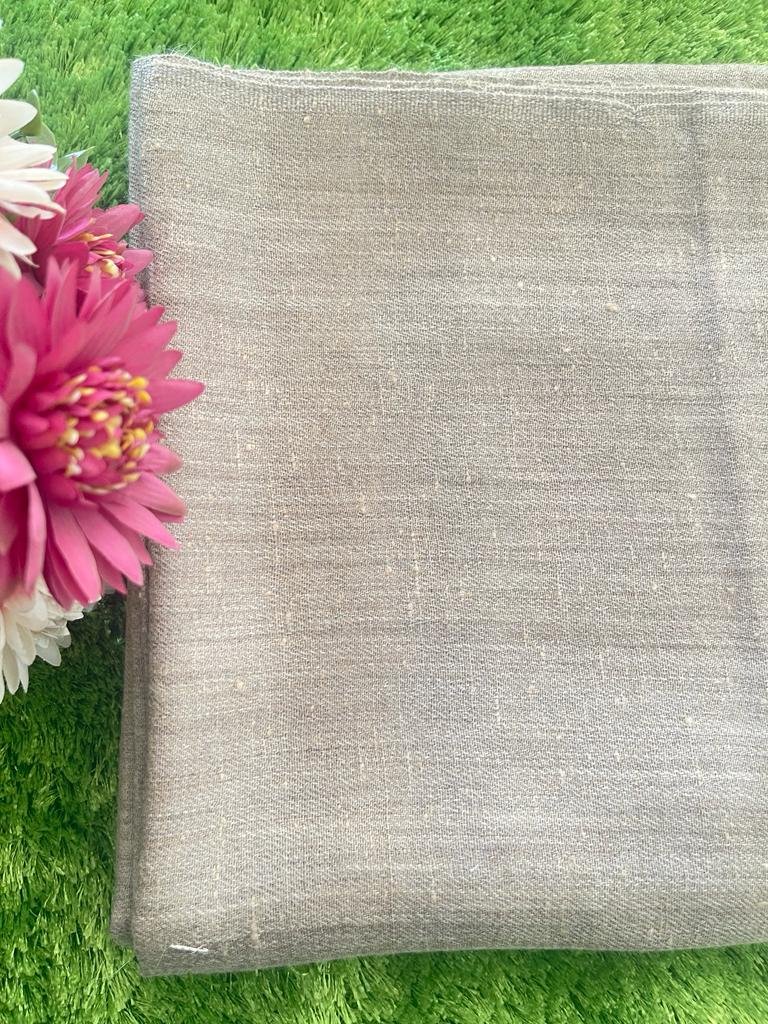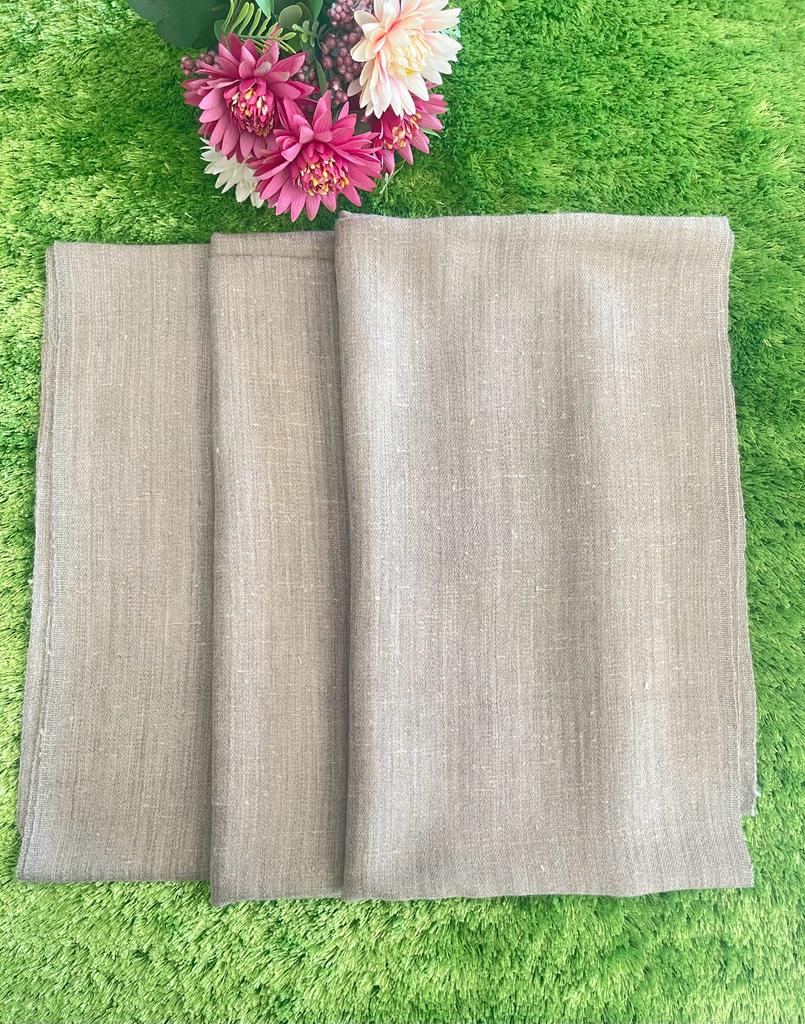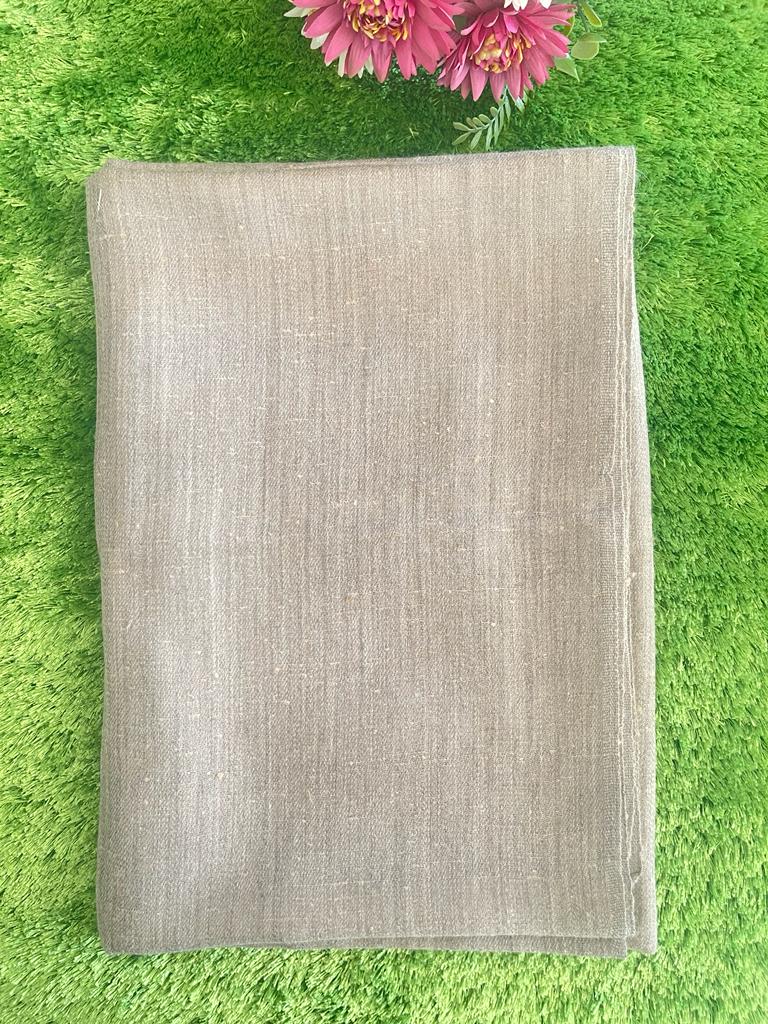Description
Pashmina refers to, depending on the source, a term for cashmere wool of the Changthangi ladakhi goat.The word pashm means “wool” in Persian, but in Kashmir, pashm referred to the raw unspun wool of domesticated Changthangi goats . In common parlance today, pashmina may refer either to the material or to the variant of the Kashmir shawl that is made from it. Both cashmere and pashmina come from the same goat but typical cashmere ranges from 12 to 21 microns in diameter, whereas pashmina can also refer to a cashmere and silk blend (70 % / 30 %) that has a typical fiber range from 12 to 16 microns
Goats used for pashmina shed their winter coat every spring. One goat sheds approximately 80–170 grams (3–6 oz) of the fibre. In the spring (the moulting season), the goats naturally shed their undercoat, which regrows in winter. This undercoat is collected by combing the goat, not by shearing, as in other fine wools. A traditional producer of pashmina wool in the Ladakh region of the Himalayas are a people known as the Changpa. These are a nomadic people and inhabit the Changthang plateau , which has a minimum altitude of 13,500 feet (4,100 m) above sea level and a winter temperature which can drop to −40 °C (−40 °F) The Changpa rear sheep in these harsh climates for meat, and pashmina goats for wool.
Raw pashmina is exported to Kashmir. All steps, from combing (removing impurities and guard hair, and aligning fibers) and spinning, to weaving and finishing, are traditionally carried out by hand by specialized craftsmen and women. The major center of pashmina fabric production is in the old district of the city of Srinagar. The approximate time put into producing a single traditional pashmina stole (70x200cm) is 180 hours.









Reviews
There are no reviews yet.